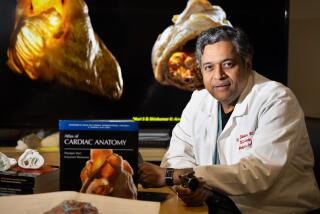Ashes, ashes, all fall down
AFTER the Black Death swept through England in 1348-49, a survivor summed up the catastrophe in a stark inscription on a church wall in Hertfordshire: âWretched, terrible, destructive year, the remnants of the people alone remain.â In Italy, eyewitnesses described corpses layered like âlasagnaâ in burial pits. The poet Petrarch asked simply, âWhere are our dear friends now?â
Even in a world saturated with more information than ever before about mass disasters (both natural and man-made), the 14th century outbreak of bubonic and pneumonic plague -- now known as the Black Death -- retains a unique hold on the popular imagination. About 25 million people -- a third of the population of pre-plague Europe, from Ireland to the easternmost Baltic regions -- perished in just four years, after a fleet of Genoese merchant galleys packed with infected rats and sailors imported the pestilence to Sicily from the Crimea in autumn 1347. Countless more died in Asia (a fact largely neglected by Western historians). The plague seems to have originated in Inner Mongolia and was carried westward to the Crimea and eastward to China by Tartar traders and warriors.
The very phrase âblack deathâ (referring to the dark splotches caused by internal hemorrhaging) lends a mythic quality to the distant disaster. As John Kelly points out in his history of the plague, that phrase was not in common usage in Europe until the 18th century. The plague generation referred to the catastrophe as âthe Great Mortality.â
Kelly, a veteran writer of popular books on medical subjects, had intended to write one on the future of pandemics but instead fell under the spell of the gripping contemporary accounts of the medieval plague. Indeed, one factor distinguishing that plague from earlier disasters was the survival of so many eyewitness descriptions, from Boccaccioâs cynical masterpiece âThe Decameronâ to the dry but revealing records of merchants. It is as if not only Pliny the Younger but also hundreds of his contemporaries had left behind firsthand accounts of the eruption of Vesuvius in AD 79.
Like the modern outbreaks of AIDS and SARS (severe acute respiratory syndrome), the spread of the plague was facilitated by communication and commerce. The Yersinia pestis bacterium, borne from rats to humans by abundant fleas in a world where filth was the norm, might well have remained isolated on a Mongolian steppe had the Tartars not unified much of Eurasia, crisscrossing the continent with merchant caravans and an early pony express service called the Yam.
This is the perfect book for readers with catholic interests, because the author cannot resist including details that, while not strictly part of the Black Death story, exemplify the law of unintended consequences. Around AD 800, someone figured out how to enable horses to pull more weight without choking. The invention of the horse collar (followed by the equally useful horseshoe), and a long period of global warming that began about the same time, contributed to unprecedented growth in agricultural productivity -- which encouraged population growth, which eventually provided a perfect host for the spread of plague. Who knew?
Indeed, medieval humans knew almost nothing about the fundamental causes of illness. But 14th century Europeans were implicated in one of historyâs most efficient mechanisms for transmitting disease: war. As the author notes, no human activity, today or yesterday, has been more closely linked to epidemics. The carnage of the 14th century has been described by numerous historians, and Kelly sums it up succinctly: âIn the decades before the plague, the Scots were killing the English; the English, the French; the French, the Flemings; and the Italians and the Spanish, each other.... Armies grew larger, battles bloodier, civilians were attacked more frequently, and property was destroyed more routinely -- and each change helped to make the medieval battlefield and the medieval soldier more efficient agents of disease.â
The minority whose rationality gave them insight into what might be done to discourage the spread of disease were either disregarded or attacked, often for religious reasons. The Muslims in Spain, whose knowledge of medicine was far more advanced than that of European Christians, could do little, because Islam had declared earlier theories of contagion heretical (since God alone supposedly had power over life and death). Ibn al-Khatib of Granada (1313-1374), one of the last great Muslim intellectuals of the Iberian convivencia, or coexistence, bravely declared that the role of contagion in spreading the plague was âfirmly established by experience, research, mental perception, autopsy and authentic knowledge of fact.â Not surprisingly, he was eventually imprisoned for heresy, then dragged from his cell and murdered by a devout Muslim mob.
Good Catholics, most of whom regarded autopsies as sacrilegious, thought they knew better. Many believed that the plague was indeed contagious and that the agents of contagion were Jews, who were poisoning Christian wells (and dying of the plague right along with the Christians). Killing Jews was viewed as a prophylactic measure, and in 1348-49, large numbers of them were hanged, burned at the stake or even rolled into rivers in wine casks, conveniently empty because French and German vineyards had been left uncultivated as the Black Death swept through wine country.
âThe Great Mortalityâ also offers a timely reminder -- although the author does not explicitly make this point -- that humanityâs willingness to act on what it knows always lags behind its level of scientific knowledge. The 2004 tsunami in South Asia and last summerâs Hurricane Katrina were surely uncontrollable forces of nature, but they were also inevitable -- and their effects were exacerbated by government unwillingness to spend money on sensible protective measures. The tsunamiâs toll of about 220,000 dead or missing could have been greatly reduced had earthquake sensors been installed in the Indian Ocean -- as they had been for years in the regions of the Pacific bordering the Earthâs richest countries. And the antiquated, poorly designed levees of New Orleans were a disaster waiting to happen.
Moreover, religious fanaticism still exacts an enormous death toll -- not only through direct violence but also through religion-based rejection of medical fact. Examples are fundamentalist Protestant and Vatican resistance to the distribution of condoms as a means of fighting the spread of AIDS, and radical Islamist culpability -- based on the canard that the polio vaccine is a Western plot -- for the resurgence of polio in West Africa and India. The spirit of those who murdered Ibn al-Khatib lives on, despite scientific knowledge that even the most advanced people of the Middle Ages could only glimpse through a glass darkly. *


